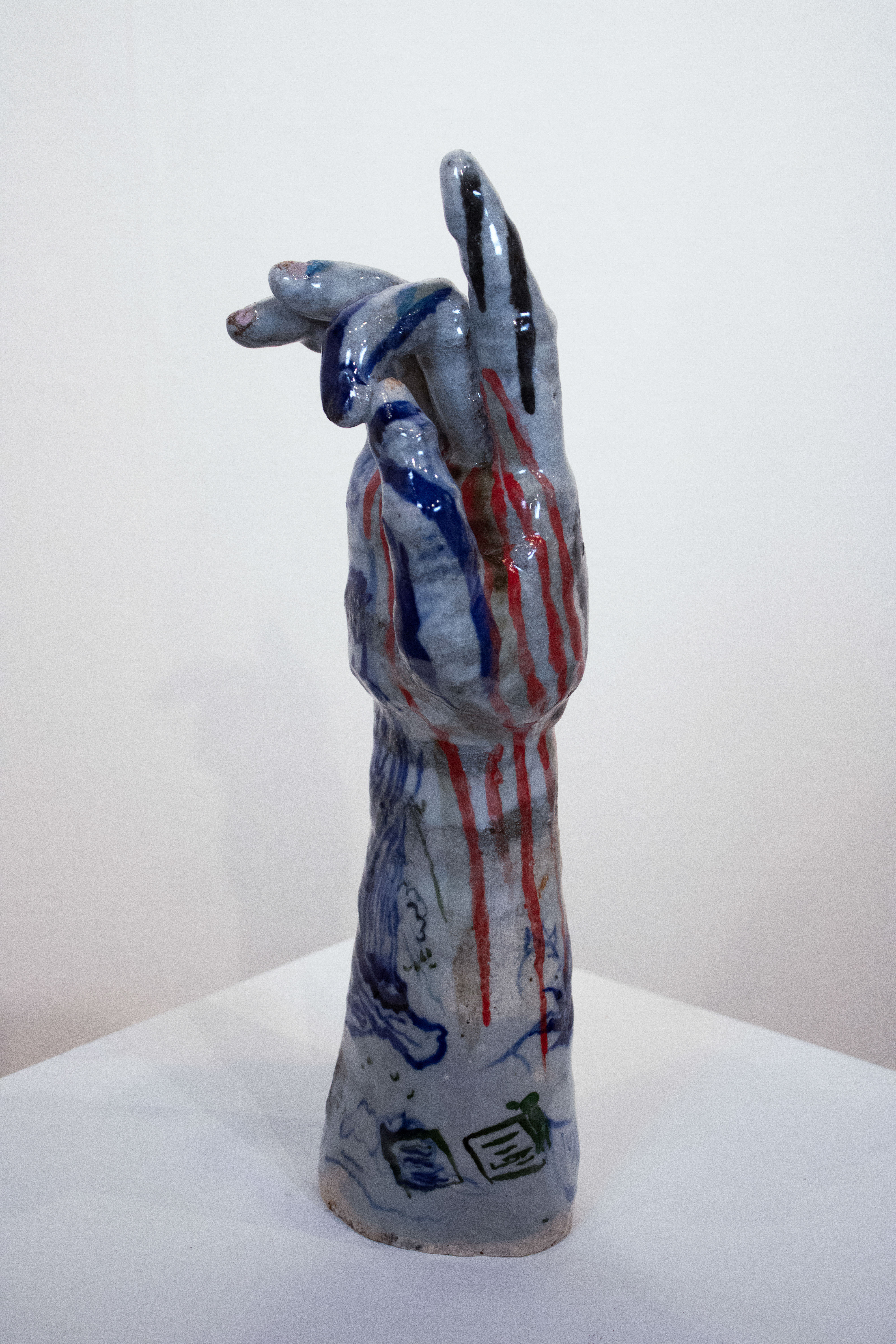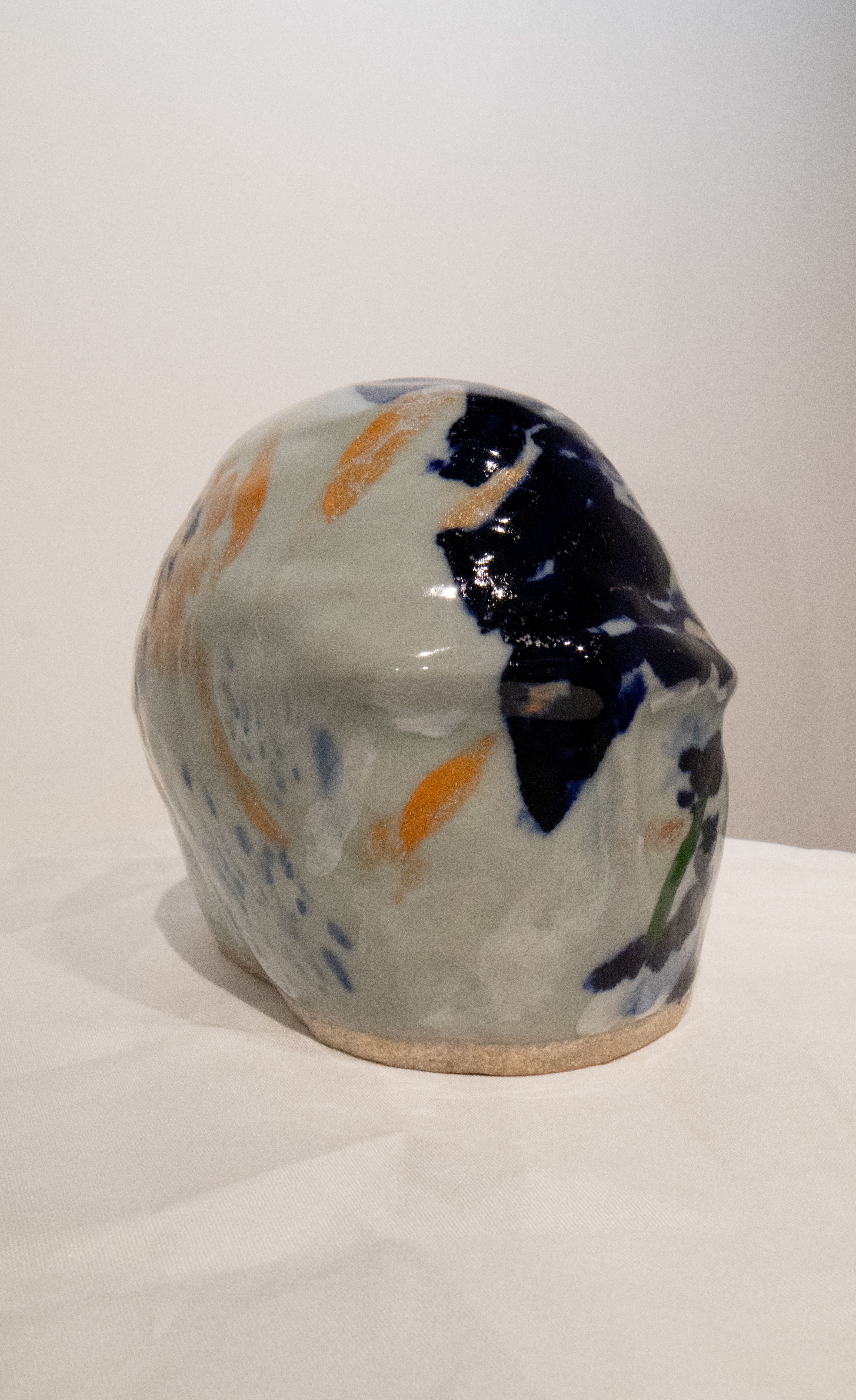Solids


From my youngest years, I’ve carried the image of a reporter—a caricature, almost—whose face was swallowed by the enormity of their camera lens. Their torso were newspapers and their hands were pens and pencils. It was a peculiar, fragmented vision, but it stayed with me, evolving over time into something far grander, more transcendental. What began as a quirky figure of observation and inquiry grew into a fantastical being, a superior creature unbound by earthly constraints.
In reimagining this figure, I stripped away its tools. The lens disappeared; the pens fell from its hands. I erased the reporter’s facial features, the human markers that tied it to a specific identity. Gone were the garments, the sense of a comfortable environment. These things, I realized, were unnecessary. This figure needed no human trappings, only people—good people—to sustain it. The creature became a repository for everything I lacked: physical strength, mental fortitude, and a serenity that seemed always out of reach. In its quiet immobility, I saw a reflection of my own struggles as an immigrant, of working tirelessly to keep food on the table since I was seventeen, of the anger and resentment that gnawed at the edges of my resolve. Yet, through many iterations, I found in this figure a kind of solace, a calmness that I could not find elsewhere.
To bring this creature to life—to make it tangible, real—I sculpted it. Its form drew inspiration from Tanghwa, the fluid yet meditative gestures of Buddhist paintings. Its chest and thighs were thick and solid, its neck elongated, its shoulder joints disappeared altogether. This was a body that could not function without its people, a being reliant on collective care. Its large hands and feet symbolized an ultimate strength, a strength rooted not in utility but in existence itself. It was okay, I realized, for this creature to simply be.
The humanoids emerged unclothed, their lack of garments a testament to their freedom from unnecessary adornment. Their gestures were borrowed from Tanghwa—graceful, meditative, and reflective of an inner calm. Immobility became their defining trait: thick chests and thighs anchoring them to the ground, elongated necks reaching upward, and absent shoulder joints underscoring their reliance on others. These were bodies that could not act alone, yet their immobility amplified their presence, making them monuments to strength through stillness.
To deepen their symbolism, I added drawings and paintings to their bodies, turning their surfaces into layered collages. These images became representations of impressions, thoughts, and stimuli—a map of the internal and external worlds that shape us. The humanoids transformed into immersive experiences, offering more than a single surface or layer of meaning. Their presence invited reflection, grounding the chaotic in the meditative.
Materializing these humanoids as sculptures offered a depth and tangibility that single-layer paintings could not. They are likely to accompany larger installations or paintings in the future, expanding their immersive quality. Creating even bigger sculptures will be my next step—a way to cultivate calmness and invite viewers into spaces of quiet reflection amid the noise of modern life.
In reimagining this figure, I stripped away its tools. The lens disappeared; the pens fell from its hands. I erased the reporter’s facial features, the human markers that tied it to a specific identity. Gone were the garments, the sense of a comfortable environment. These things, I realized, were unnecessary. This figure needed no human trappings, only people—good people—to sustain it. The creature became a repository for everything I lacked: physical strength, mental fortitude, and a serenity that seemed always out of reach. In its quiet immobility, I saw a reflection of my own struggles as an immigrant, of working tirelessly to keep food on the table since I was seventeen, of the anger and resentment that gnawed at the edges of my resolve. Yet, through many iterations, I found in this figure a kind of solace, a calmness that I could not find elsewhere.
To bring this creature to life—to make it tangible, real—I sculpted it. Its form drew inspiration from Tanghwa, the fluid yet meditative gestures of Buddhist paintings. Its chest and thighs were thick and solid, its neck elongated, its shoulder joints disappeared altogether. This was a body that could not function without its people, a being reliant on collective care. Its large hands and feet symbolized an ultimate strength, a strength rooted not in utility but in existence itself. It was okay, I realized, for this creature to simply be.
The humanoids emerged unclothed, their lack of garments a testament to their freedom from unnecessary adornment. Their gestures were borrowed from Tanghwa—graceful, meditative, and reflective of an inner calm. Immobility became their defining trait: thick chests and thighs anchoring them to the ground, elongated necks reaching upward, and absent shoulder joints underscoring their reliance on others. These were bodies that could not act alone, yet their immobility amplified their presence, making them monuments to strength through stillness.
To deepen their symbolism, I added drawings and paintings to their bodies, turning their surfaces into layered collages. These images became representations of impressions, thoughts, and stimuli—a map of the internal and external worlds that shape us. The humanoids transformed into immersive experiences, offering more than a single surface or layer of meaning. Their presence invited reflection, grounding the chaotic in the meditative.
Materializing these humanoids as sculptures offered a depth and tangibility that single-layer paintings could not. They are likely to accompany larger installations or paintings in the future, expanding their immersive quality. Creating even bigger sculptures will be my next step—a way to cultivate calmness and invite viewers into spaces of quiet reflection amid the noise of modern life.




When you are walking
When you are awake
But you are lingering
But you are lying
Talking but closed
Caring but unheard
Alone in the bright
Two in the twilight
Wander in the forest,
Wonder by the
Me
You
And all,
But not me.


